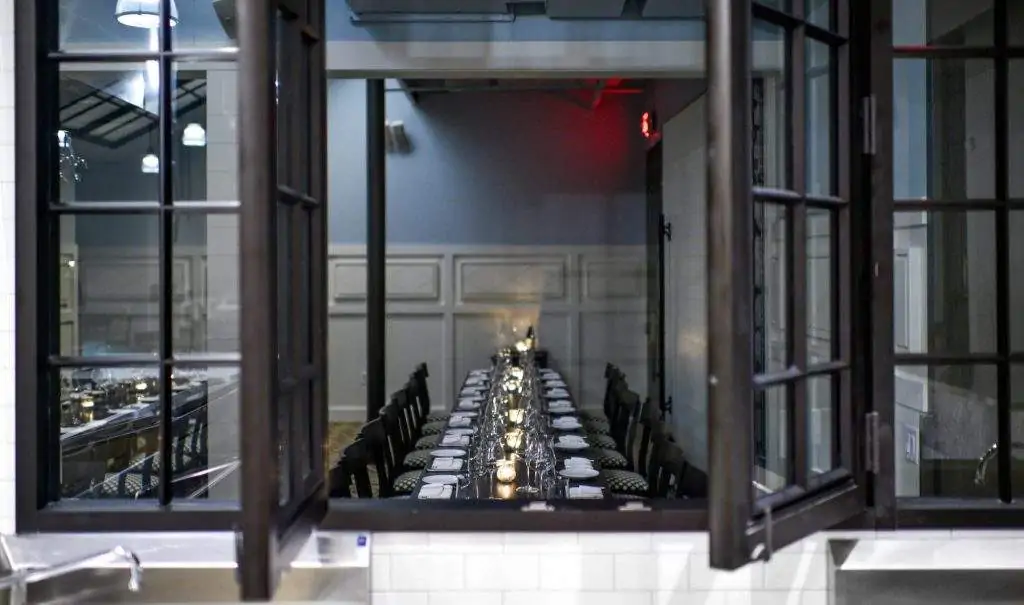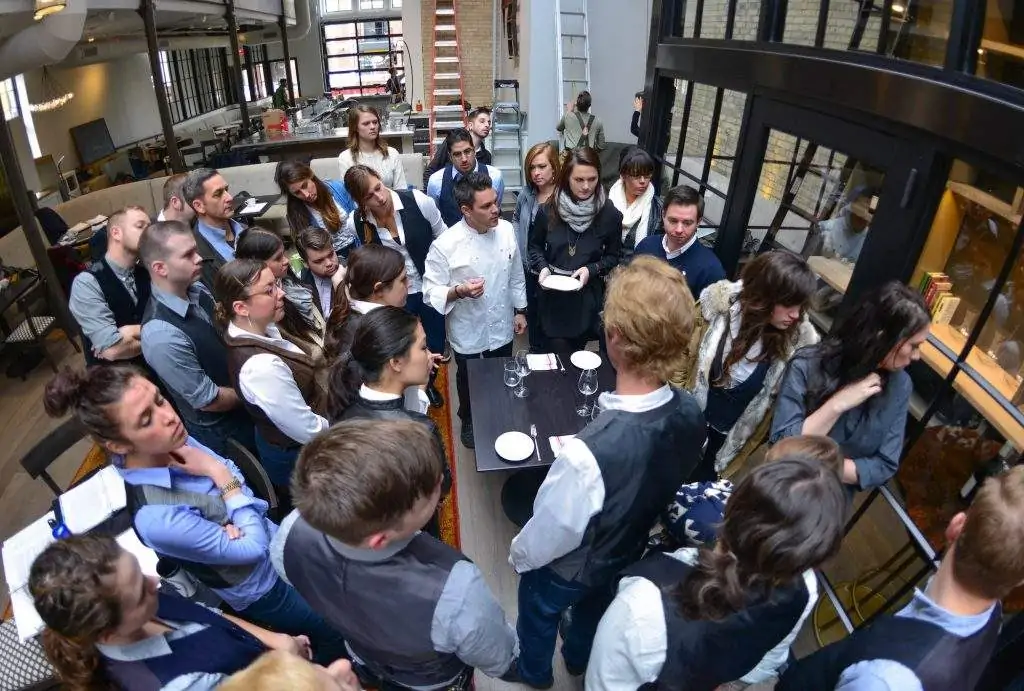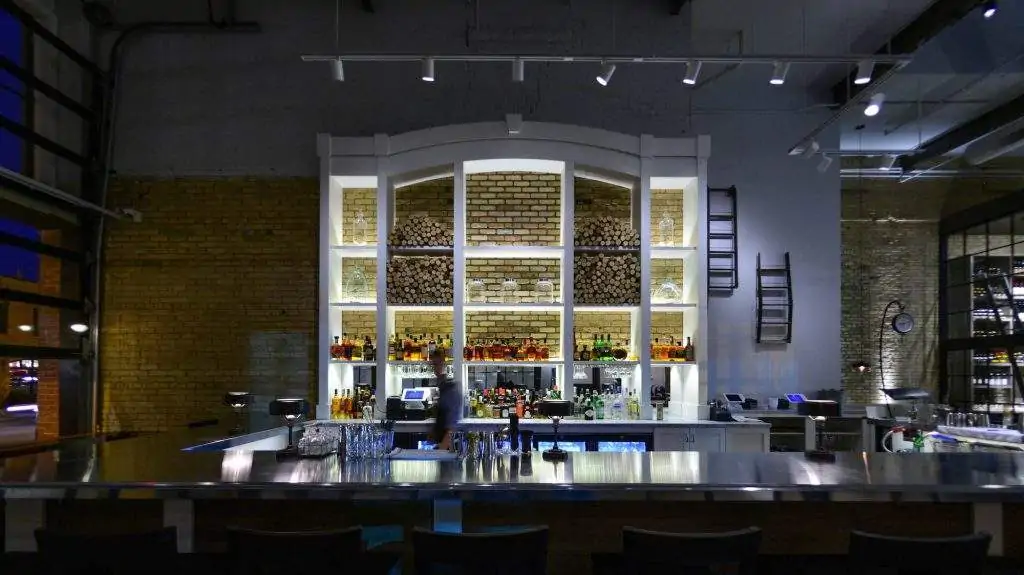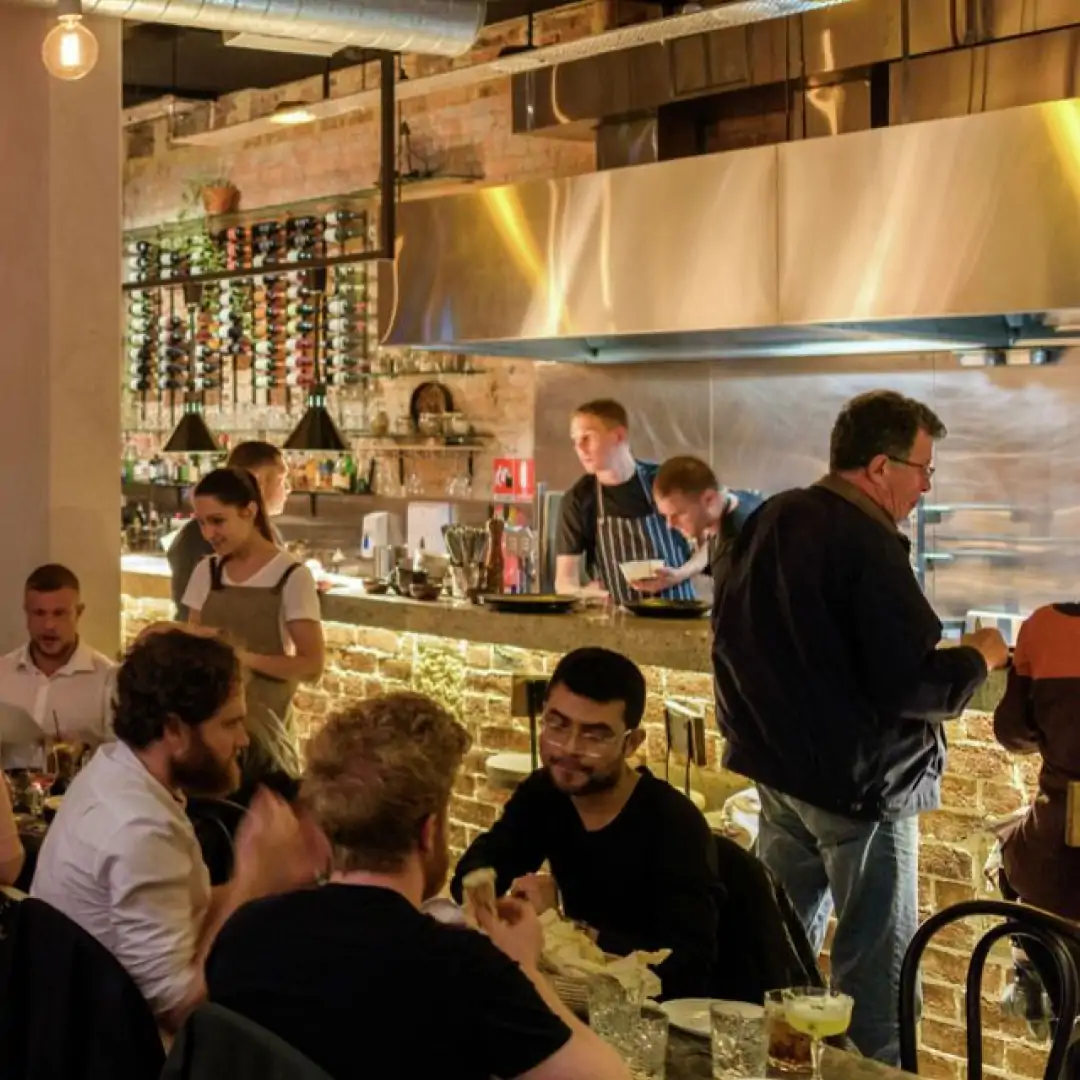The days and weeks leading up to a restaurant opening are sheer madness. As the big day approaches, the hours will come and go at an ever-increasing pace and the pressure to get everything done can be both invigorating and debilitating. Financial concerns, last-minute construction or permit woes, and the other curveballs that always arise can entice restaurateurs to cut corners like pre-opening staff training.
To put it plainly: this is a hugely expensive mistake. Yes, training may require some short-term revenue loss. However, a properly trained staff will result in lower turnover, superior guest experiences, and better press in the long run.
Properly preparing your team is an investment in your restaurant getting off on the best foot possible. The following pre-opening training tips will ensure that your team is knowledgeable, confident, and well-rehearsed come opening day.

Start early
Designing an effective pre-opening training program is extremely time consuming, especially if you’ve never done it before, so make sure you start early. Getting all of your employees in the same place at the same time before you even start generating revenue is a big financial investment; don’t squander that commitment by procrastinating on the planning front. Confident opening teams are born out of an efficient, dynamic, and well organized onboarding process so make this a priority months in advance of bringing on staff, not weeks (and certainly not days).
Make a detailed schedule
Your training schedule will be your roadmap, so this is the best piece to start with. Even though your schedule will change countless times as opening day gets closer, it will set expectations for managers; help determine what written materials you’ll need to put together for employees; and provide structure that ensures you’re making the most out of this precious time. Ultimately, what ends up on your training program should represent the organization’s values and the key elements of the concept, but these are some important topics that almost every restaurant should consider including:
Employee handbook review. Employees that have a clear understanding of what they should expect to give and to receive from their employer are more comfortable and confident, allowing them to do a better job. Simply handing out an employee handbook and asking staff to read it and sign it isn’t enough to be sure that they are absorbing its contents.
Introducing leaders. It seems obvious, but is often forgotten. Be sure to introduce each member of the leadership team and allow them to speak briefly about themselves and why they are proud to be a part of the restaurant. Depending on the size of the staff, giving the rest of the employees the opportunity to do the same sends a positive message and reinforces how much you value what each team member brings to the table.
Product knowledge. What you cover and how much time you devote to each subject will greatly depend on the restaurant’s concept. All of these topics provide the best opportunity to include the vendors, farmers, and distributors you’ve been working with; they will appreciate the opportunity to share their passion for their products and staff will benefit from learning from different people. These are the major categories to consider:
- Menu (ingredients, cooking techniques, presentation, allergens, substitutions)
- Cheese
- Wine
- House cocktails
- Classic cocktails
- Spirits
- Beer
- Coffee
- Tea
Service standards. Pre-opening training is the best opportunity you’ll have in the life of your restaurant to define what is right and what is wrong when it comes to technical service. How do you want tables to be cleared? What’s the proper way to transfer a bar check? It may feel tedious, but on your first busy night, you’ll be grateful that you aren’t wasting time explaining the same thing to 20 different people and being frustrated that they don’t already know the “right” way of doing things. Managers and employees will also be more comfortable if they have a clear understanding of your expectations.
POS training. Sure, most of us have used every POS system under the sun, but none of these experiences have been in your restaurant. You don’t want servers searching for a tomato salad button for five minutes in the middle of the first night of service, only to find that it was never programmed to begin with. Give your team members time to familiarize themselves with the locations of functions and menu items in your POS and use this same time to ensure that every menu item is in the computer in the right place at the correct price and printing where it’s supposed to.

Create written materials
Having a vision of what service should look and feel like is one thing, but being able to put that vision on paper and teach it to others is something else entirely. Creating written standards for your team creates one solid point of reference that can serve as everyone’s North Star. By taking the time to write documents like a comprehensive service manual, you’ll give yourself an opportunity to edit your thoughts in advance of teaching them to others and ensure that they’re cohesive, as well as make new hire training dramatically more consistent and efficient before and after you open.
Build in performance measurement
Pre-opening training is a big investment so it’s critical that you’re holding your team accountable for learning and retaining everything you’re teaching them throughout the process. Daily written quizzes will ensure that employees are taking the time needed to commit important information to memory and send a clear message about the level of dedication you expect. Incorporating verbal testing into daily training exercises is also a great way to make sure that your employees are comfortable communicating with guests about everything related to the restaurant come opening day.
Perfect practice makes perfect
Before you dive into preview events, do some dress rehearsals just amongst your staff to get some of the bigger kinks worked out. Yes, preview events are designed to do this too, but wouldn’t you rather find out your expediting printer doesn’t work before you have guests of any variety in your house?
Organizing some “staff on staff” exercises where one group serves while the other dines is a great way to make some early improvements and discoveries. What’s the best place for trays to go in the service stations? How should the service bartender organize their tickets? These exercises should include the whole team—a well-practiced service team is useless without a well-practiced kitchen team.
Don’t forget, it’s your team, and not you, that will be directly responsible for the quality of your guests’ experiences day in and day out. Choosing to invest in properly preparing your employees to execute your vision will be more healthy and empowering in the short term, and more cost-effective in the long term.
Opening night only comes around once, and getting it right the first time will lead to regulars, great press and a foundation of success for years to come.

Photos courtesy of Bonjwing Photography.
When it comes to opening a restaurant smoothly and running it successfully, Alison Arth is a pro. She held leadership positions on the opening teams of multiple restaurants within Daniel Boulud’s prestigious Dinex Group in New York before working as General Manager ofLocanda and Director of Food and Beverage at The Battery in San Francisco. Now, as the founder and principal of hospitality consulting firm Salt & Roe, she partners with restaurants to create consistent, genuine guest experiences and build long-term success. To date, she’s been involved in 13 restaurant openings; most recently, she has consulted on the opening of Gavin Kaysen’s Spoon and Stable in Minneapolis.




